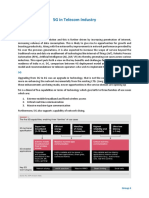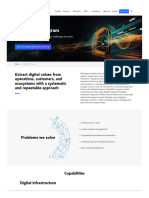0% found this document useful (0 votes)
107 views16 pagesIt Leader Guide To Low Code
The document provides an overview of low-code development. It defines low-code as an approach to software development that utilizes little to no coding through graphical user interfaces. This allows both professional developers and business users to create applications faster. The document discusses how low-code can help organizations overcome development obstacles, accelerate time to market, improve flexibility of human resources, and transform their development process.
Uploaded by
pomyles15Copyright
© © All Rights Reserved
We take content rights seriously. If you suspect this is your content, claim it here.
Available Formats
Download as PDF, TXT or read online on Scribd
0% found this document useful (0 votes)
107 views16 pagesIt Leader Guide To Low Code
The document provides an overview of low-code development. It defines low-code as an approach to software development that utilizes little to no coding through graphical user interfaces. This allows both professional developers and business users to create applications faster. The document discusses how low-code can help organizations overcome development obstacles, accelerate time to market, improve flexibility of human resources, and transform their development process.
Uploaded by
pomyles15Copyright
© © All Rights Reserved
We take content rights seriously. If you suspect this is your content, claim it here.
Available Formats
Download as PDF, TXT or read online on Scribd
/ 16



































































































